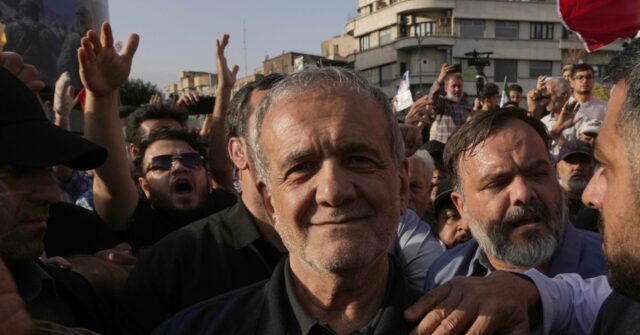The American strikes on three nuclear facilities in Iran is likely to upend the country’s thinking on whether to obtain a nuclear weapon.
Before the strikes, which hit early Sunday in Iran, U.S. intelligence had assessed that Iran had not made the decision to build a nuclear weapon, although its large stockpile of refined uranium put a bomb within its reach, senior officials said.
Even after more than a week of Israeli strikes on Iran, senior intelligence officials said that a 2003 religious ruling by Iran’s supreme leader prohibiting the development of a nuclear weapon still held.
But U.S. intelligence determined that such a prohibition would likely change if the United States entered the war and struck Fordo, Iran’s most secure nuclear facility, or if Israel killed the supreme leader, Ayatollah Ali Khamenei.
The United States struck Fordo and two other nuclear sites, at Natanz and Isfahan.
“The sad truth here is that by striking Iran, the U.S. has made it much more likely that Iran will want to obtain nuclear weapons,” said Rosemary Kelanic, the director of the Middle East program at Defense Priorities, a think tank that advocates a restrained foreign policy.
She added: “Even if the raids knocked out all of Iran’s nuclear facilities — a big if — Iran will now be more motivated than ever to rebuild their capabilities and pursue not just uranium enrichment but actual weaponization.”
Israel’s initial strikes on Iranian nuclear facilities had set back Iran’s ability to enrich uranium and push toward weaponization of its stockpile by about six months, according to American intelligence assessments.
The U.S. attack on Fordo used B-2 bombers armed with America’s largest conventional bomb, the 30,000-pound Massive Ordnance Penetrator. In the days before the attack, some American officials predicted a successful strike could set back the Iranian program by as many as five years.
But it is not clear how quickly officials will be able to assess the damage at Fordo and the other two sites. The future of Iran’s nuclear program will depend on the extent of the damage, how many of Iran’s secret nuclear sites remain and Tehran’s negotiating position in the coming days.
While Iran’s capacity to build a bomb may be weakened, many American intelligence officials believe its resolve will harden.
Iran’s conventional defenses against Israel’s attacks in recent months have proven weak. Nuclear weapons remain the ultimate deterrent for state-on-state warfare. As a result, American officials said, the Iranian leadership could conclude that building an atomic bomb may be the only way to prevent future attacks or to ensure the country’s survival.
If the American attack fails to destroy Iran’s nuclear capability, Iran could try to race toward a bomb, using its hidden stockpiles of refined uranium. Centrifuges would be needed to refine that uranium to bomb grade, but Iran has centrifuges at other locations.
Experts in recent days have said it will be difficult for Israel or the United States to find those stockpiles. Commando teams may have to be placed on the ground to search for and destroy the caches of refined uranium.
But if the equipment is destroyed at Fordo and other sites, and Iran’s nuclear development capability has been significantly eroded, Iran may struggle to move quickly.
Before the strike, estimates of how long it could take Iran to obtain a weapon varied. The White House press secretary, Karoline Leavitt, said Iran could acquire a weapon in as little as two weeks, an estimate that aligned with one from Gen. Michael E. Kurilla, the head of Central Command. American officials say Israeli intelligence has made similar estimates.
But U.S. intelligence has determined that it would take Iran about a year to further refine its uranium and put it into a miniaturized weapon that could be fired.
Julian E. Barnes covers the U.S. intelligence agencies and international security matters for The Times. He has written about security issues for more than two decades.
The post After U.S. Strikes, Iran’s Resolve to Build a Nuclear Weapon Could Harden appeared first on New York Times.




